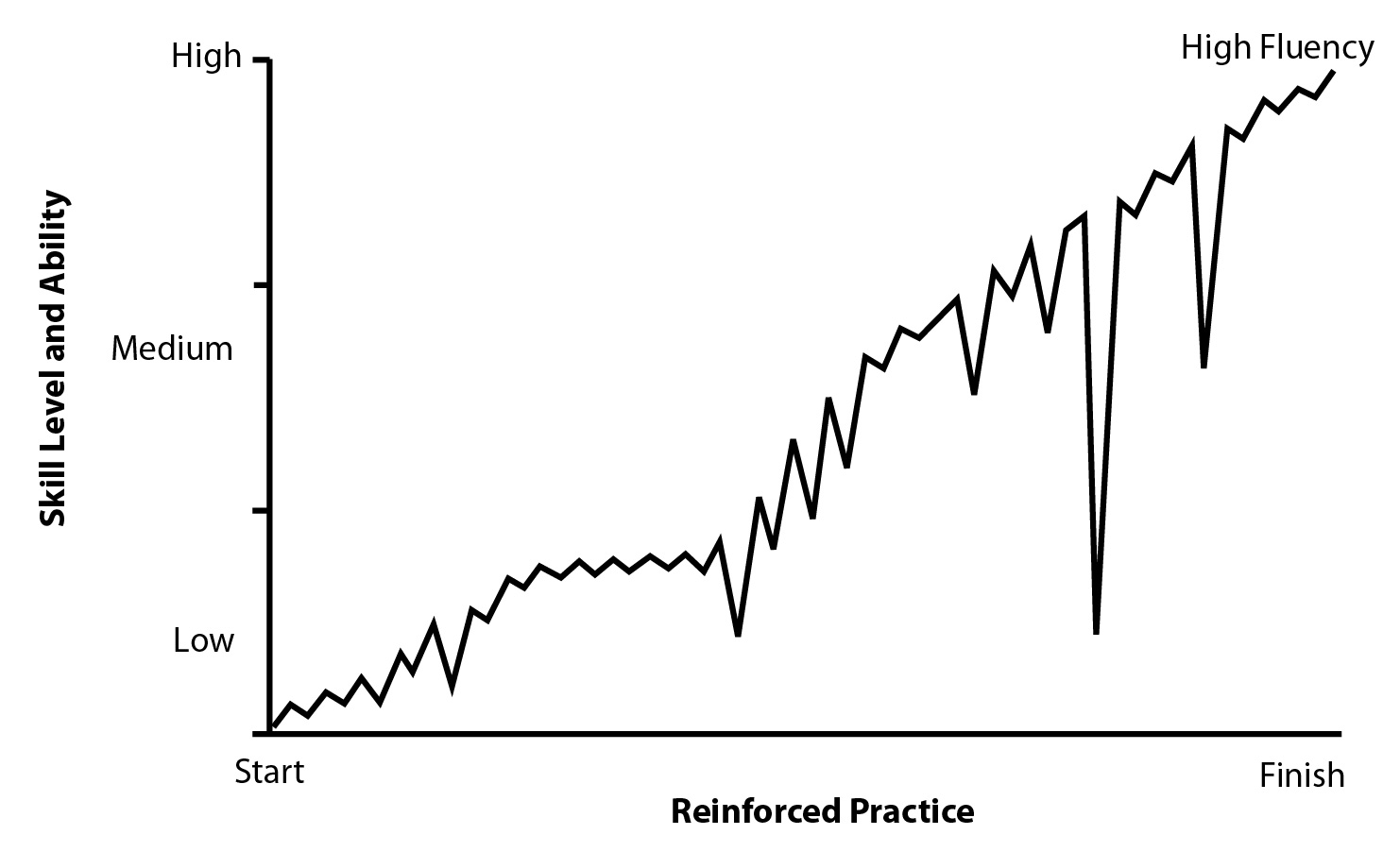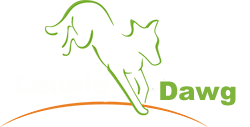About Rewards and Punishments

Standard learning curve.
The learning curve above shows unequivocally that learning new things is far from straightforward.
- The jagged lines show that all along the way your dog will be better, than worse, then better, etc.
- Notice how it levels off near the beginning–that is a period of time that the learner appears to not get better–called a plateau.
- Then, notice the ‘dips’ in the line, especially the big dip, which show that even later in the learning sequence, the learner may appear one day to have forgotten all that he or she knows. Also, notice that overall, the learner gets the material.
- Also, the ‘reinforced practice’ is discussed below, reminding the learner that rewards all along the way are necessary.
Have you ever thought about the rewards and punishments in your life? Rewards are things you get, that you want, for doing something. Punishments are things you get to stop doing something. If you stop and think about it, you tend to structure your life to get things you want (to be rewarded) and to avoid things you do not want (punishments). Our survival depends on rewards and punishments operating in our environment, mostly without us being aware of it–like ‘no pain, no gain.’ If you are learning to swim, you will have many errors, and you will learn from them given that you have a good instructor. Basically, rewards increase the probability of the behavior happening again. For our purposes, for dog training, here is a short list of the primary reinforcers:
- food
- water
- normal body temperature
- optimal levels of sensory stimulation
- rest after exertion
- sleep
- caresses, rubbing, itching, scratching
- nicotine, alcohol or other addictions
and you could probably list many other primary reinforcers for yourself. The take home message here is that all of us have plenty of primary, and secondary reinforcers in our lives. There are a number of ways that these are structured, with the most salient one being the Premack Principle, whereby someone puts off a reward until the current activity is complete. Keep this in mind as you read, please. Rewarding is also called reinforcement, and I hear that word thrown around often. It literally means the person is getting “reinforced” for doing this or that. Chances are that your disability causes more symptoms and worse symptoms than others know about, and every time you attempt to explain that, you get cut off and the other person just does not want to hear it. THAT is punishment.
Punishment is generally something done to you, or by you, that can hurt your body or endanger survival, and we are all ‘wired’ to find certain things “punishing.” Here is a short (incomplete) list of punishers:
- Extreme cold or extreme heat
- Cuts, strong blows, sharp scratches
- hunger
- thirst
- sore skin
- overly full stomach or bladder
- effortful or strenuous work
- some odors or tastes
- loud noises
- sudden noises
- lack of air
- being sick
So, a psychologist usually speaks in terms of reinforcers or punishers, and this article does not explain all of the parts of these concepts. However, I am presenting enough here for you to train your dog well. Allow me to pull the attention back to dogs.
Dogs do not respond well to aversive things, such as spanking or being yelled at. They do not know what they are being spanked for, so the will come to learn that you are unsafe if you hit your dog, and I guarantee to you that they will never get what you want them to ‘get.’ They also do not respond well to a lot of language, and asking them to know what you are saying is a fool’s errand. This is where your tone of voice comes in. You will say happy things to your dog for doing what you want, like “good dog!” over and over again buth when your dog does something you do not want him to do, you will use your angry, upset tone such as saying “no, no, no!” in your upset voice. You need to avoid correcting your dog using punishment. Instead, try to use reinforcement by directing the dog to something more positive. I never did ‘correct’ Lennie for chewing the covers of my new books, which cost $$$$. I knew it was my own problem, that I never should have placed those books on the floor for him to chew (he was a puppy). When I found the chewed covers, I just put them up and made sure he had a lot of toys. That did it. Now, he never bothers what I put on the floor because he is an adult dog and not interested in book covers or anything else like that. That incident reminded me of the importance of structuring his environment.
Reinforcement, continually, is requisite for training. Always, and I do mean always, reward your dog for doing what you ask. It is called reinforced practice. I buy inexpensive dog treats then break them up so that he gets small bites and only has to chew a few times then swallow it. Your dog will not “up the stakes” to get more treats, because they do not think that way. So here is what you will do:
- “Reinforce” continually, after every attempt. Yes, even if your dog moves just a little in the desired way, you will reinforce him or her. Reinforcement is not just about getting a reward; it is feedback, or knowledge of results. The dogs trained for the movies are reinforced continually. Lassie’s trainer always had a pocket full of dog treats and handed them out every time Lassie did what he wanted.
- You may hear from others that your dog ‘should’ do what you want for no treats. That is patently false and your dog never will do what you want unless you use treats. This is not because your dog is holding out on you; it is because simply doing the trick (or behavior) or pleasing you is not enough to keep it going for your dog long term. There are times, however, when you will not have treats in the house, so you will require that your dog does what you want without treats for that limited time.
- Do not withhold treats from your dog by deciding he will get them all at the end of the training session or when your dog helps you do something. Never use the premack principle on your dog. That is patently the wrong thing to do. Reward after every attempt in the positive directions. For example, if you are working on shaking hands, do not reward him for getting up and trying to leave, but instead redirect him to sit back down and try again, and reward for that.
- Reinforcement is usually done in small steps, called behavior shaping. You need to reward successive approximations to train different things. I will give you ideas in each training module.
- Dogs only last about 15 minutes or so in any one training session. Don’t push it.
- Also, what a dog learned yesterday may appear to be gone today, but it is not gone. See the learning curve above, and live by it. Just proceed to ‘start over,’ and you won’t really be starting over but instead you will pick up on the behavior learned yesterday. Your dog will move through the steps quickly due to prior learning.
- Remember: the more ‘tricks’ or procedures your dog learns, the easier it will be for him or her to learn the next one.
